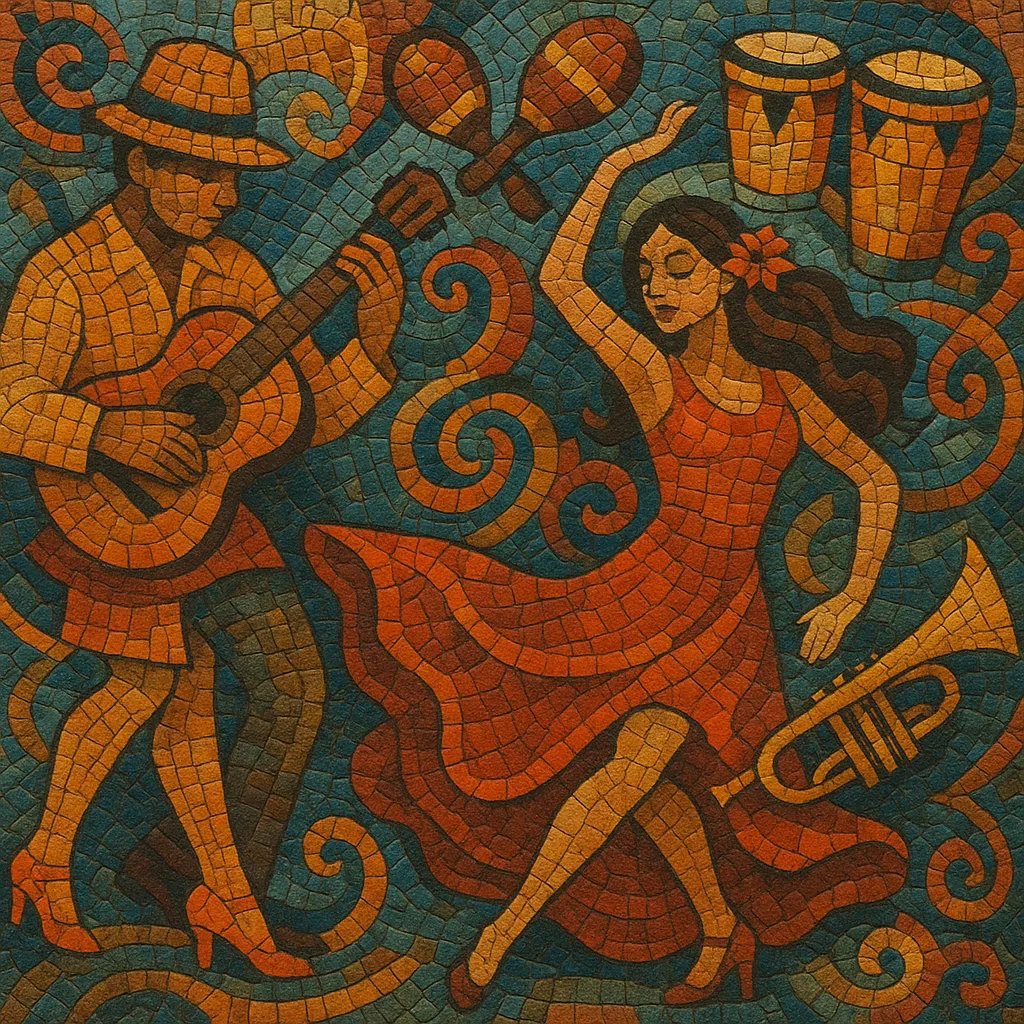Latin (as a genre label) is a broad umbrella used by the recording industry to categorize popular music rooted in Latin America, the Caribbean, and the Iberian world, often characterized by syncopated Afro-diasporic rhythms, dance-forward grooves, and lyrics primarily in Spanish or Portuguese.
As a marketplace category that took shape in the mid-20th century United States, it gathers diverse traditions—Afro-Cuban, Brazilian, Mexican, and Caribbean styles—into a shared space. In practice, "Latin" spans everything from big-band mambo and bolero ballads to contemporary pop, rock, hip hop, and dance fusions produced by artists of Latin American heritage.
The label "Latin" emerged in the United States during the ballroom and big-band eras, when Afro-Cuban and Caribbean rhythms (rhumba, mambo) captivated dancers and bandleaders in cities like New York. Cuban son and son montuno provided the core rhythmic vocabulary (clave), while bolero and tango offered romantic and cosmopolitan textures that were easily marketed to North American audiences.
Through the 1960s and 1970s, the umbrella expanded to include Brazilian styles (bossa nova, samba) and the New York–forged salsa movement, alongside Mexican regional forms such as mariachi and ranchera. Record stores, radio formats, and media charts began treating these diverse styles as a coherent category, further cementing "Latin" as both a cultural marker and an industry shelf.
The 1990s brought a massive crossover, with artists blending pop-rock and dance production with Latin rhythms and Spanish-language lyrics. Major-label investment, pan-hemispheric TV, and expanding Latin diasporas in the US helped propel "Latin" stars onto global pop charts. The category now encompassed Latin pop, Latin rock, Latin house, and Latin jazz as distinct yet interconnected sub-markets.
Digital platforms and social media accelerated the global reach of Spanish- and Portuguese-language hits. Reggaeton, urbano latino, and Latin hip hop achieved mainstream dominance, while collaborations across pop, EDM, and R&B normalized bilingual releases. Today, "Latin" functions as a culturally defined super-genre whose core identity lies in Afro-Latin rhythmic sensibilities, dance orientation, and Latin American/Caribbean linguistic and cultural roots.
Start with a clave-based foundation (2-3 or 3-2) to anchor syncopation. Layer interlocking percussion (congas, bongos, timbales, güiro, cowbell) for forward momentum. For Brazilian inflections, use samba or bossa nova pulse with surdo and shaker patterns.
Favor diatonic progressions with borrowed color (secondary dominants, modal interchange) to balance brightness and romanticism. Melodies should be singable and rhythmically elastic, often phrased against the groove for lift. Brass hooks (trumpets, trombones, saxes) or nylon-string guitar lines reinforce memorable motifs.
Combine a rhythm section (bass, drum kit or percussion), piano/keys (montuno figures or pop comping), and guitars (clean electric or nylon acoustic). Add horns or strings for drama, and modern productions can weave in synths and programmed drums while preserving the percussive heartbeat.
Sing primarily in Spanish or Portuguese (bilingual lines are common). Themes often center on love, celebration, identity, and dance. Use call-and-response choruses or coros for communal energy, and place the lead vocal slightly ahead of the beat for urgency.
Structure songs with tight intros, verse–pre–chorus–chorus arcs, and a rhythmic breakdown or percussion solo to spotlight the groove. In pop-leaning tracks, sidechain compression and crisp transient control keep percussion and bass articulate, while preserving warmth in vocals and guitars.


